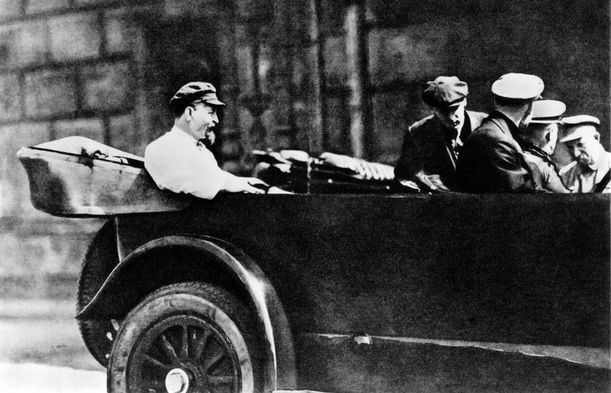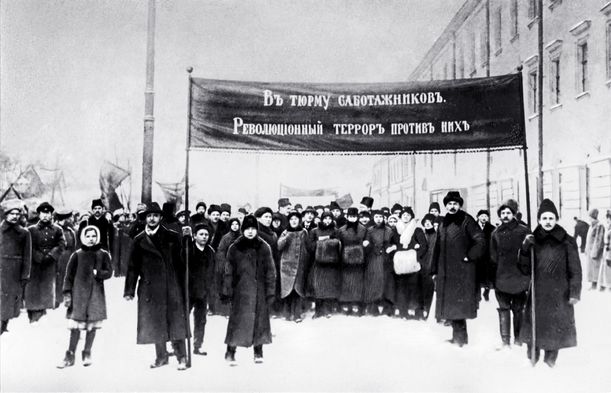Revolution and Terror
The Bolsheviks had seized the power almost without bloodshed, but soon violence was virtually the only means of solving political and social conflicts.
A secret police service already took shape as early as 1916 in the Pan-Russian Extraordinary Commission for the suppression of Counter-Revolution and Sabotage (“Cheka”). Following a number of assassinations, most prominently the shooting of the chief of the Petrograd branch of the “Cheka” and the attempt on Lenin’s life, the Soviet Russian government proclaimed the “Red Terror” campaign in 1918. It targeted everyone who questioned the Bolshevik claim to unrestricted power. The Communists crushed all other parties: the centre-right ones immediately, the other Socialist ones during the civil war. The “isolation of class enemies” in so-called concentration camps, a measure provided for by the “Red Terror” decree, was initially restricted to the period of the civil war.
The revolution was followed by a bloody civil war which lasted until 1920, and even until 1922 in a number of extra-European regions. It consisted of myriad isolated disputes. The chief conflict was that between the revolutionary forces (the “Reds”) and the restorative anti-Bolshevists (the “Whites”). The “Whites” received intermittent support from abroad. Some of the armed conflicts resulted from aspirations towards national independence.

Felix Dzerzhinsky, founder and chairman of the “Cheka”, in Moscow (in the back seat of the automobile), undated
Source: Karl-Dietz-Verlag, Berlin

Demonstration in Petrograd, 1917
The text on the banner reads: “Saboteurs to prison. Revolutionary terror against them.”
Source: Karl-Dietz-Verlag, Berlin
